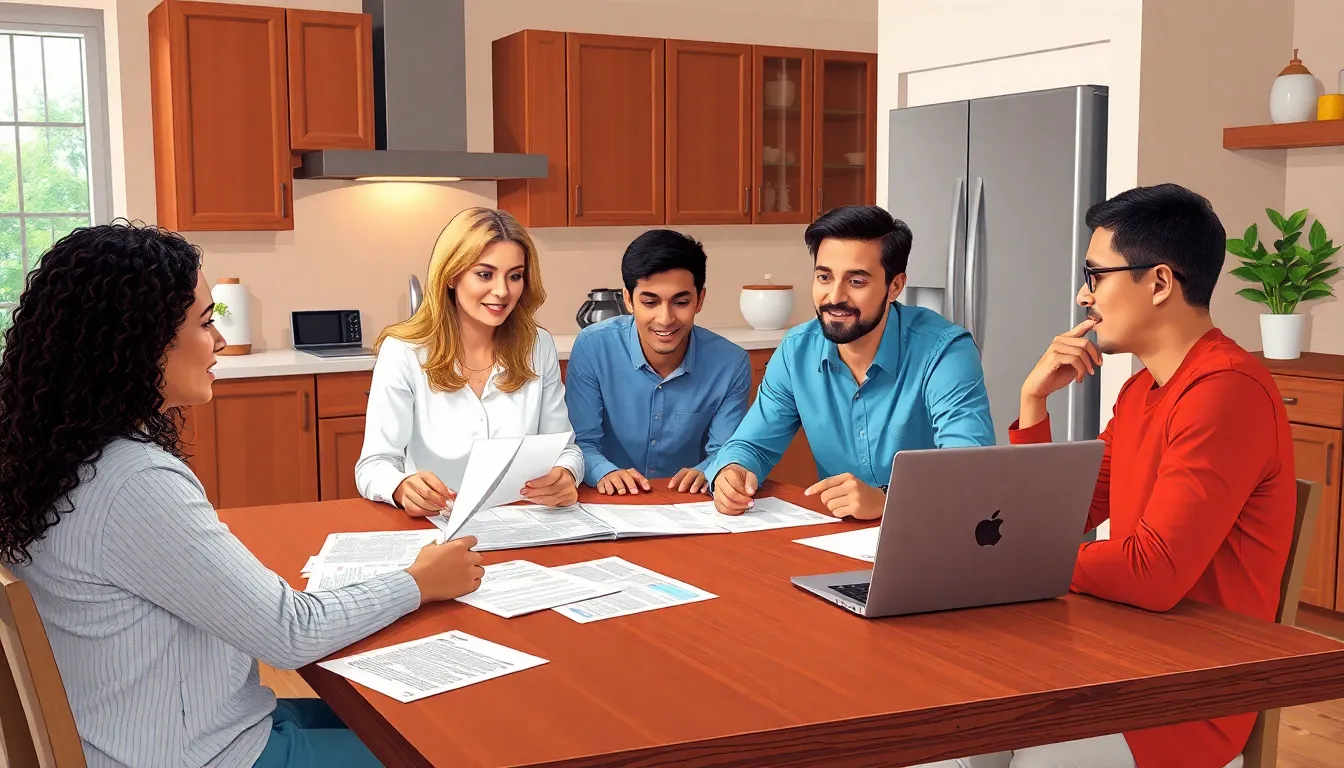Table of Contents
ToggleBuying a home is a big deal, but let’s face it, navigating the world of mortgage down payments can feel like trying to solve a Rubik’s Cube blindfolded. With so many options and numbers flying around, it’s easy to get overwhelmed. But don’t worry—understanding down payments doesn’t have to be as complicated as rocket science.
Understanding Mortgage Down Payment
A mortgage down payment represents the initial amount paid upfront when purchasing a home. This payment significantly influences loan eligibility and monthly mortgage payments.
Definition and Purpose
A mortgage down payment is a percentage of the home’s purchase price paid directly to the seller. This initial investment serves multiple purposes, including demonstrating commitment to the purchase and lowering the overall loan amount. Typically, down payments range from 3% to 20% based on the loan type and lender requirements. For instance, conventional loans usually favor higher down payment percentages. Lower down payments may result in private mortgage insurance, increasing monthly expenses.
Importance in Home Buying
A mortgage down payment holds great importance in the home buying process. Lenders assess this amount when evaluating a borrower’s risk profile. Higher down payments can lead to better loan terms, including lower interest rates and smaller monthly payments. Buyers may also avoid private mortgage insurance by making substantial down payments. Additionally, a significant down payment often indicates financial stability, boosting buyer confidence in a competitive market. Understanding down payment implications helps buyers make informed decisions.
Types of Down Payments

Several types of down payments exist based on the type of mortgage. Understanding these options helps buyers choose the best fit for their financial situations.
Conventional Loans
Conventional loans typically require a down payment of 5% to 20%. Lenders prefer higher payments, as they lower the loan-to-value ratio. Lower down payments can lead to private mortgage insurance, increasing monthly costs. Buyers who can put down at least 20% often avoid this insurance. Additional benefits, such as better interest rates and terms, frequently accompany larger down payments. Shopping around for lenders can aid in finding favorable conditions.
FHA and VA Loans
FHA loans generally require a minimum down payment of 3.5%. This option suits first-time buyers with limited savings. VA loans, available to veterans and active military members, often require no down payment. Both loan types facilitate homeownership for those with less upfront cash. With FHA loans, borrowers must meet specific credit score requirements. VA loans, however, focus more on military service than financial status. Exploring these avenues can lead to significant savings for qualified individuals.
Factors Influencing Down Payment Amount
Several factors impact the amount required for a mortgage down payment, shaping buyers’ strategies when entering the housing market.
Property Type
Property type plays a significant role in determining down payment expectations. Single-family homes typically demand higher down payments compared to condominiums and townhouses. Lenders consider the perceived risk in financing different housing types; thus, investment properties often require at least 15% to 25% down payment. Varied down payment percentages also depend on location factors. Distressed or rural properties might have different requirements, as lenders assess the likelihood of receiving the investment back based on property value and demand.
Credit Score and Financial Stability
Credit score significantly influences down payment requirements. Higher scores often lead to lower down payments, with conventional loans accessible to those with scores above 620. Financial stability affects a buyer’s ability to save for a down payment. Buyers with stable employment and solid debt-to-income ratios may secure favorable loan terms with smaller payments. Conversely, lower credit scores can necessitate larger down payments to mitigate lender risk. Consistently monitoring credit improvement strategies allows buyers to lower future down payment requirements and enhance loan approval chances.
Strategies for Saving for a Down Payment
Saving for a down payment requires strategic planning and disciplined execution. Implementing effective methods can accelerate progress toward homeownership.
Budgeting Techniques
Setting a budget is essential for efficient saving. Allocate monthly expenses and identify areas to cut costs, redirecting those funds toward the down payment. Automating savings into a dedicated account simplifies the process, ensuring consistent contributions. Tracking progress can motivate buyers, making it easier to adjust spending habits as needed. Another technique involves using apps designed for savings goals, which can provide insights and reminders to stay on track. Implementing these techniques not only creates a clear savings plan but also reinforces financial awareness.
Down Payment Assistance Programs
Various down payment assistance programs are available to help eligible buyers. Federal, state, and local organizations offer grants or low-interest loans to reduce the financial burden. First-time homebuyers often qualify for specific programs, making it easier to secure funding without extensive income requirements. Research specific criteria for each program, as they may include income limits or necessary workshops. Some employers even provide assistance as part of relocation packages. Utilizing these resources can significantly lessen the initial costs associated with purchasing a home.
Navigating the world of mortgage down payments doesn’t have to be daunting. With the right knowledge and strategies in place buyers can approach this critical step with confidence. Understanding the various down payment options and their implications empowers individuals to make informed decisions tailored to their financial situations.
By exploring available resources and assistance programs buyers can significantly reduce their upfront costs, paving the way to homeownership. Ultimately a well-planned down payment strategy can lead to better loan terms and a more manageable mortgage experience.







